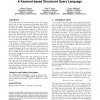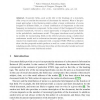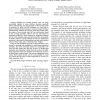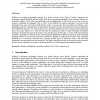1826 search results - page 38 / 366 » Using Random Forests in the Structured Language Model |
BMCBI
2010
13 years 8 months ago
2010
Background: Biological processes in cells are carried out by means of protein-protein interactions. Determining whether a pair of proteins interacts by wet-lab experiments is reso...
SIGMOD
2010
ACM
13 years 8 months ago
2010
ACM
Automated extraction of structured data from Web sources often leads to large heterogeneous knowledge bases (KB), with data and schema items numbering in the hundreds of thousands...
ECIR
2007
Springer
13 years 10 months ago
2007
Springer
Document fields, such as the title or the headings of a document, offer a way to consider the structure of documents for retrieval. Most of the proposed approaches in the literatu...
ICDM
2009
IEEE
14 years 3 months ago
2009
IEEE
—Methods for learning decision rules are being successfully applied to many problem domains, especially where understanding and interpretation of the learned model is necessary. ...
ELPUB
2006
ACM
14 years 2 months ago
2006
ACM
Walking is becoming increasingly popular as a leisure activity across Europe. Outdoor equipment has modernized, gained flexibility and lost weight. GPS devices are gaining popular...




